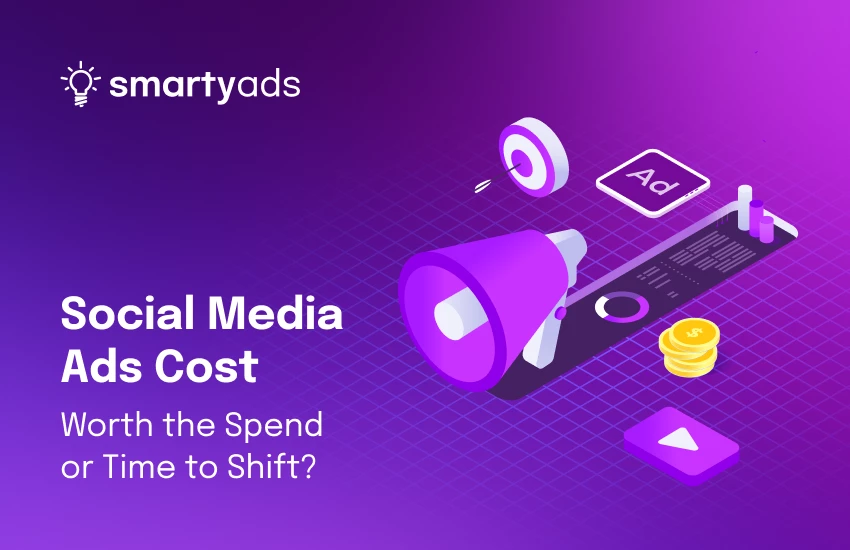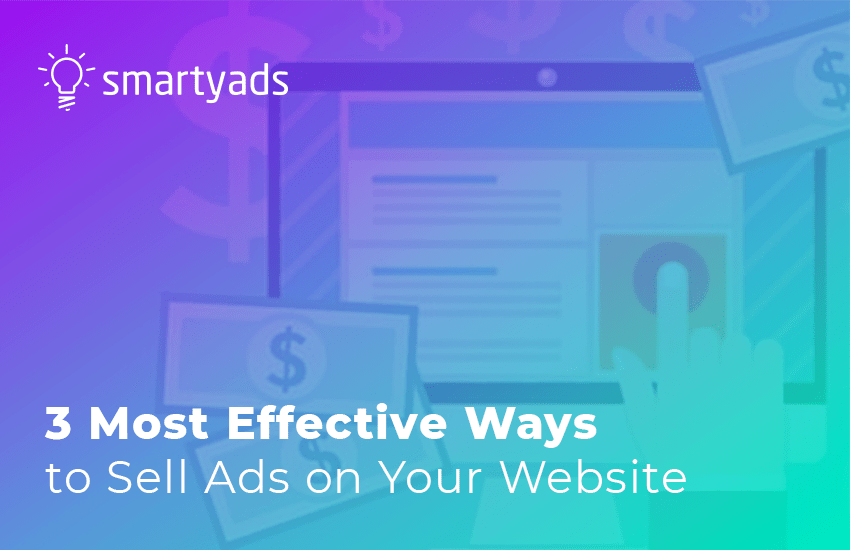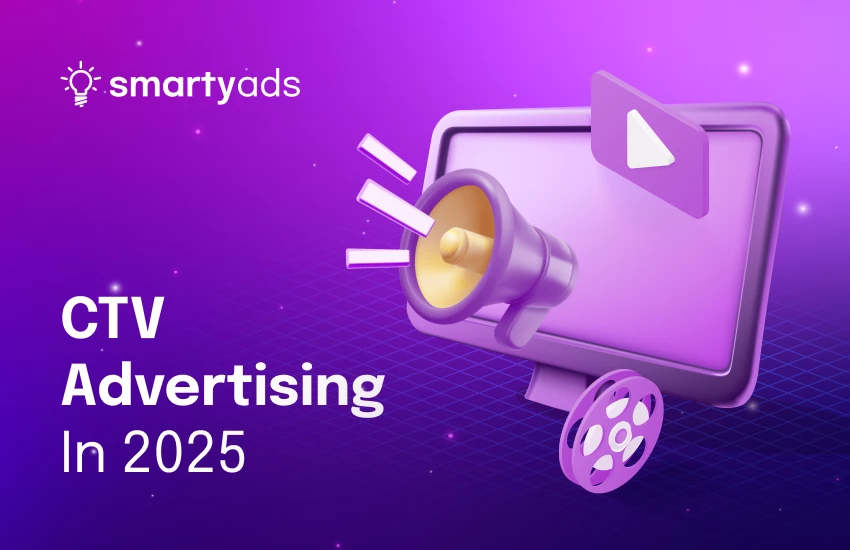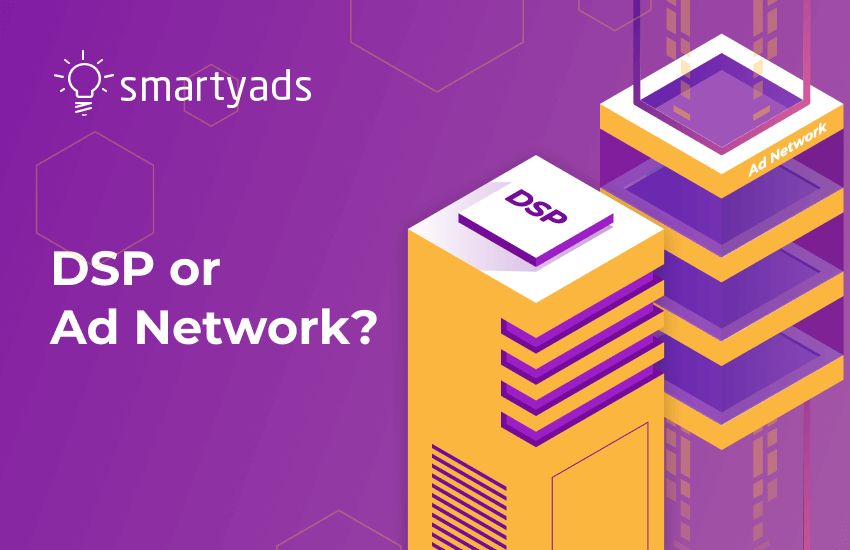Marketing budgets in 2025 are staring down a new reality: quite surprisingly, social media advertising has shed its reputation as a low-cost growth engine. CPMs (cost per thousand impressions) are climbing steadily across major platforms—Meta, TikTok, Snapchat, YouTube—and with that, marketers are standing at a crossroads. Do you keep doubling down on social or consider more flexible, scalable routes and alternatives?
In this piece, we’ll unravel the trends shaping ad costs, decode seasonal spikes, and explain why programmatic isn’t just a plan B; it might be your best bet that you use along with social campaigns. Alternatively, just take an interactive quiz to find out whether you know it all. Just go ahead and challenge yourself!
CPM in 2025: What’s the real price of social ads?
Just to refresh our memory on what CPM pricing in advertising, CPM, or cost per thousand impressions, is, the price advertisers pay for every 1,000 times an ad is shown. For example, at a $10 CPM, the advertiser pays $10 each time the ad reaches 1,000 views, regardless of how many clicks it gets.
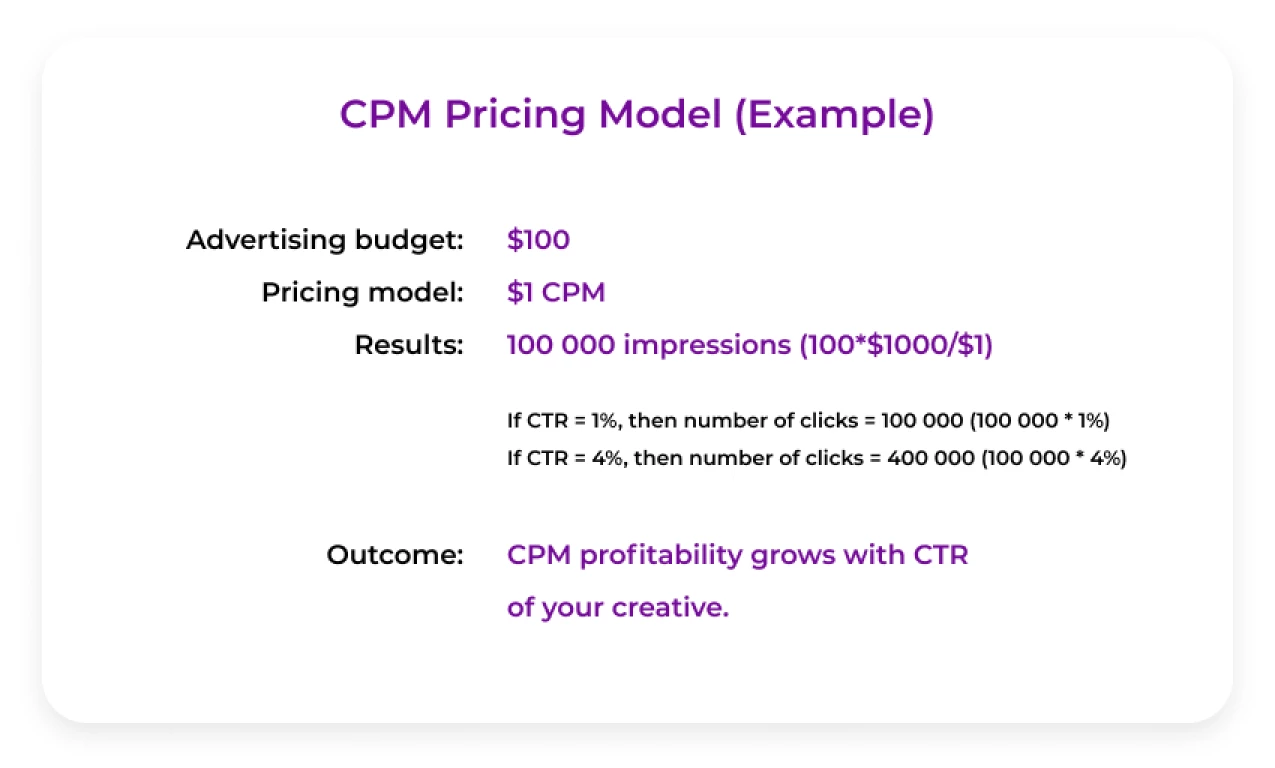
Most frequently, this model is chosen by brands that strive to build their reputation, raise brand awareness, and attract audiences at the top of the funnel.
CPM prices have been rising lately due to increased competition for ad space, higher demand during peak seasons, and shifts in platform algorithms that prioritize paid reach over organic visibility.
TikTok, Meta, YouTube, Snapchat — same game, new rules
- According to Guptamedia, which gathered the latest stats for social media ads cost (2025), TikTok is still the cost-leader, but the gap is closing. In June 2025:
- TikTok CPM was $2.97
- Meta (Facebook + Instagram) CPM reached $8.17, with an average CPLC of $0.68 and LCTR of 1.2%
- YouTube averaged $3.67, bolstered by connected TV reach (Nielsen says YouTube claimed nearly 10% of all U.S. TV viewership in May 2024)
- Snapchat clocked in at $6.43—up 47% YOY, the sharpest rise of any platform
- TikTok might still be the budget buy, but its pricing is inching closer to Meta’s as targeting options improve and demand soars.
The Q4 squeeze: When CPMs go wild
The holiday season is no longer just about peppermint mochas—it’s also the hottest, most expensive time to advertise.
Summer runs on micro-moments—those fleeting slices of time when something clicks and people act instantly. They’re not leisurely browsing; they’re living. Walking past a screen in the heat, dodging a sudden downpour, chasing a feeling. And in that split second, the right ad can become part of the moment. That’s why advertising on DOOH and other media becomes so popular, driving CPMs high. Overall, we can say that:
- YouTube peaked at $5.70 in December 2024
- Snapchat spiked at $10.48 in October
- TikTok followed Meta’s lead with elevated CPMs during BFCM
- Day-of-week trends reveal more surprises:
- Snapchat is priciest on Thursdays ($8.52)
- Meta spikes on Fridays ($7.43)
- YouTube on Mondays ($4.06)
- TikTok also peaks on Thursdays ($4.83)
For brands, media planning without these insights is like sailing blindfolded.
Strategic windows: jump start and Q5
According to Guptamedia's findings, strategic windows for advertisers fall within the following frames:
- Jump Start (Nov 19–25): CPMs are ~13% cheaper than BFCM, while consumer spending is already heating up.
- Q5 (Post-Dec 25): low competition, high attention. Think of it as a bonus round for hitting end-of-year targets.
- Q5 is a high-ROI window for brands that want to stay visible while others go dark.
Beyond CPM: What you really pay for
CPM advertising is complex, and judging a book by its cover wouldn’t be the right approach. So, when planning their budgets, advertisers also need to weigh:
- CPA (cost per acquisition)
- CVR (conversion rate)
- AOV (average order value)
During BFCM 2024, CPMs went sky-high, but returns didn’t always follow suit. Snapchat’s ad rates were 2–4x higher than competitors', but Meta delivered 13x better conversions. Eye-popping CPMs don’t mean better outcomes—only smarter planning does.
Enter programmatic: smart, broad, and agile
By 2026, global spending on programmatic advertising is projected to hit $725 billion—a testament to how deeply automation has reshaped the ad industry. Since the introduction of real-time, data-driven ad placements, programmatic has evolved from a niche innovation to the backbone of digital media buying.
Why advertisers are leaning in
Its value is clear on both sides of the equation: advertisers get more intelligent targeting and better efficiency, while publishers gain access to broader demand and improved yield. No wonder nearly 70% of all display campaigns today run through programmatic channels.
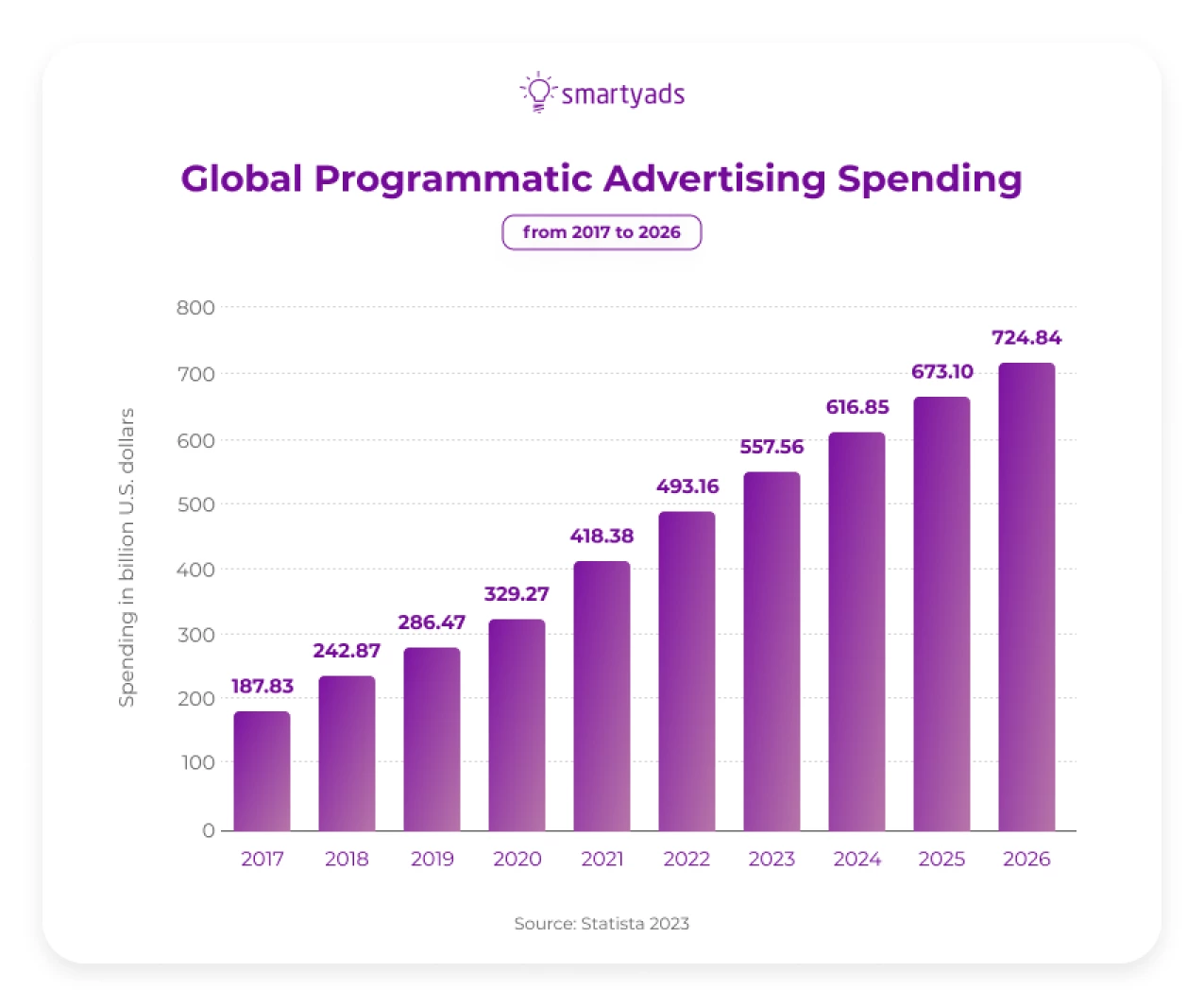
Benefits of programmatic buying include:
- Auction-based flexibility: no more panic buying during peak CPM weeks.
- Massive inventory: think CTV, mobile, native, rich media ad formats.
- Cross-channel reach: Reach users beyond TikTok or Instagram, as well as on major websites connected to a programmatic global pool.
Platforms like Meta might offer control within walled gardens, but programmatic lets you shop across the entire open web. This helps avoid overdependence on any one social giant, just what we found out comparing programmatic ad network vs Google Ad Network.
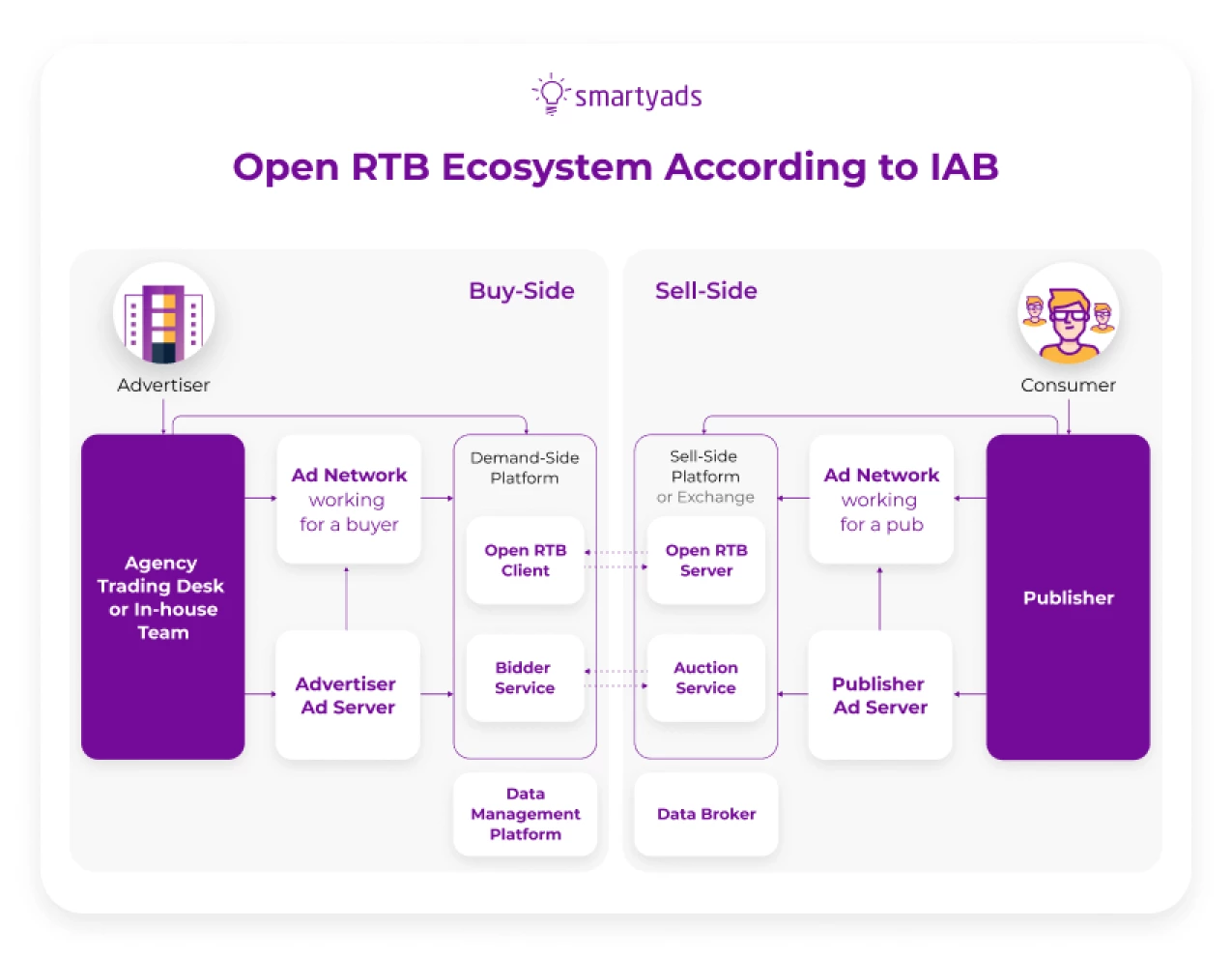
Programmatic is not bound by a certain environment; rather, it is an omnichannel solution that is connected to the vast RTB ecosystem, widening the potential pool of ad buyers and sellers.
So, is programmatic cheaper?
CPM ad rates in programmatic are largely dependent on the platform providers and other specifics. Roughly speaking, the cost to reach a thousand viewers, known as CPM, usually falls between $1 and $5.
However, this price can swing widely depending on things like who you're targeting, the format of the ad, and where it's being shown. High-value placements and video formats tend to be more expensive, sometimes climbing as high as $10 to $30 per thousand impressions.
So, based on the data delivered above, platforms like Meta and Snapchat consistently exceed even the higher end of the typical programmatic range.
When looking strictly at CPMs, programmatic is generally more cost-efficient than social media. But social media may sometimes offer richer data and audience targeting, which is often priced into those higher CPMs. It's less about cost and more about context and outcomes.
When to use social vs. programmatic: a strategic breakdown
When social media ads are the best fit
Brand building and engagement: Social platforms shine when it comes to humanizing your brand and generating buzz. Whether you're launching a new product or building long-term affinity, formats like Reels, Stories, and influencer-led UGC allow for emotional storytelling that feels native, not interruptive. This kind of brand intimacy is difficult to replicate elsewhere.
Simpler campaigns and quick launches: Need speed? Social media platforms are built for plug-and-play campaigns. With user-friendly interfaces, templated creatives, and real-time analytics, you can go from idea to launch in a single day. It’s ideal for SMBs or solo marketers who want performance without complexity.
Targeting within platform ecosystems: If you know your audience hangs out on one platform—say, Gen Z on TikTok or Millennials on Instagram—then social’s first-party data targeting tools are gold. Lookalike audiences, engagement-based retargeting, and pixel data give you strong ROI without third-party cookies. Read more about the specifics of millennial advertising campaigns in our previous article.
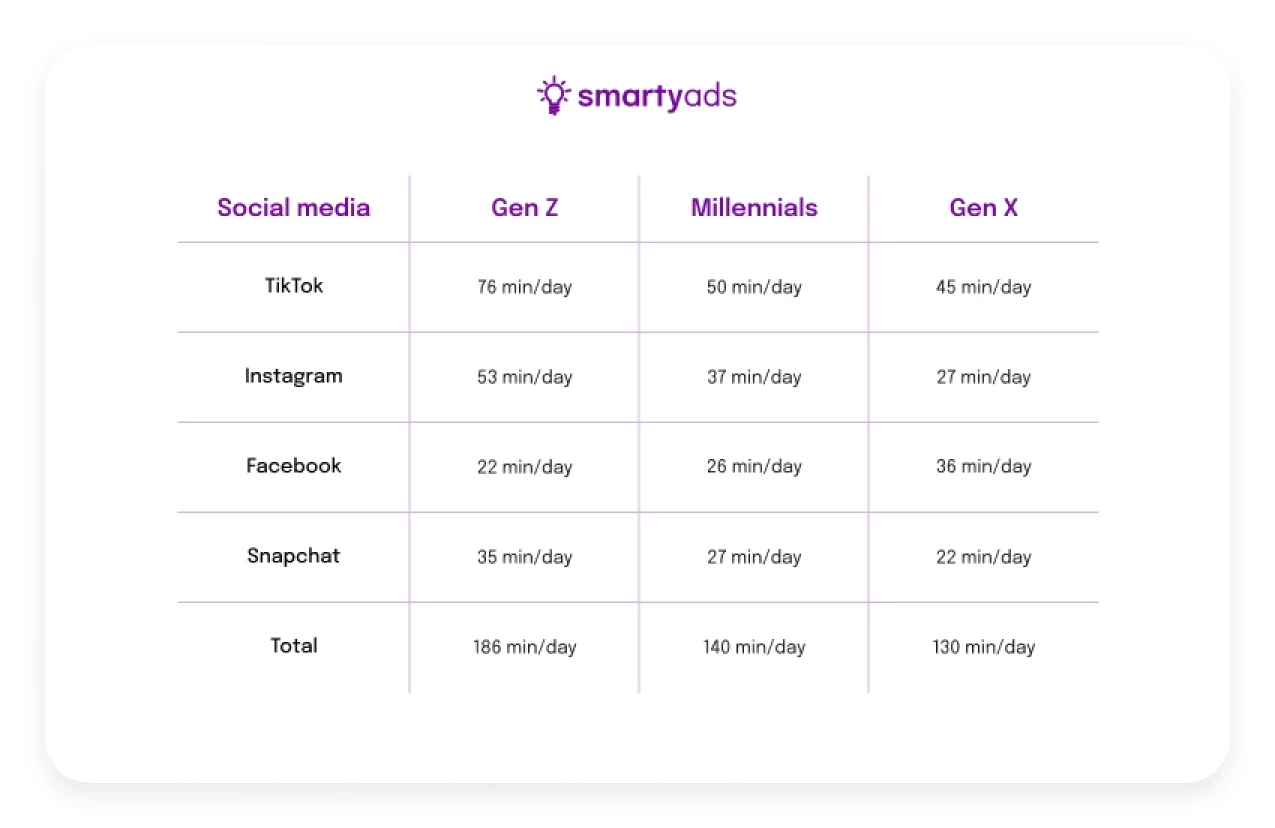
Creative storytelling: Storytelling isn’t just for film festivals. Social platforms allow you to build micro-narratives over time—think swipe-up adventures, behind-the-scenes IG Lives, or TikTok storytelling trends. This format suits verticals like fashion, fitness, travel, and DTC eCommerce. Learn how to leverage the best examples of storytelling in advertising in our previous article.

When programmatic advertising makes sense
Cross-platform reach and scale: There’s no need to live just in the social media bubble. With programmatic, your ad can appear on a mobile app in LA, a news site in Berlin, or a smart TV in Tokyo—simultaneously. It’s the most scalable way to reach diverse audiences across touchpoints.
Data-driven precision and optimization: This is where programmatic earns its stripes. DSPs allow testing your campaigns at scale and drive real-time bid optimization. If you’re targeting micro-segments or personalizing creatives dynamically, programmatic gives you the horsepower.
Cost efficiency during peak seasons: When social CPMs surge, especially in Q4, programmatic lets you pivot. Want to push more budget to DOOH or native ads in quieter channels? Want to lock in CPMs with private marketplace (PMP) deals? It’s all become doable. More so, with programmatic platforms like DSP, launching even complex campaigns like DOOH becomes fairly simple.
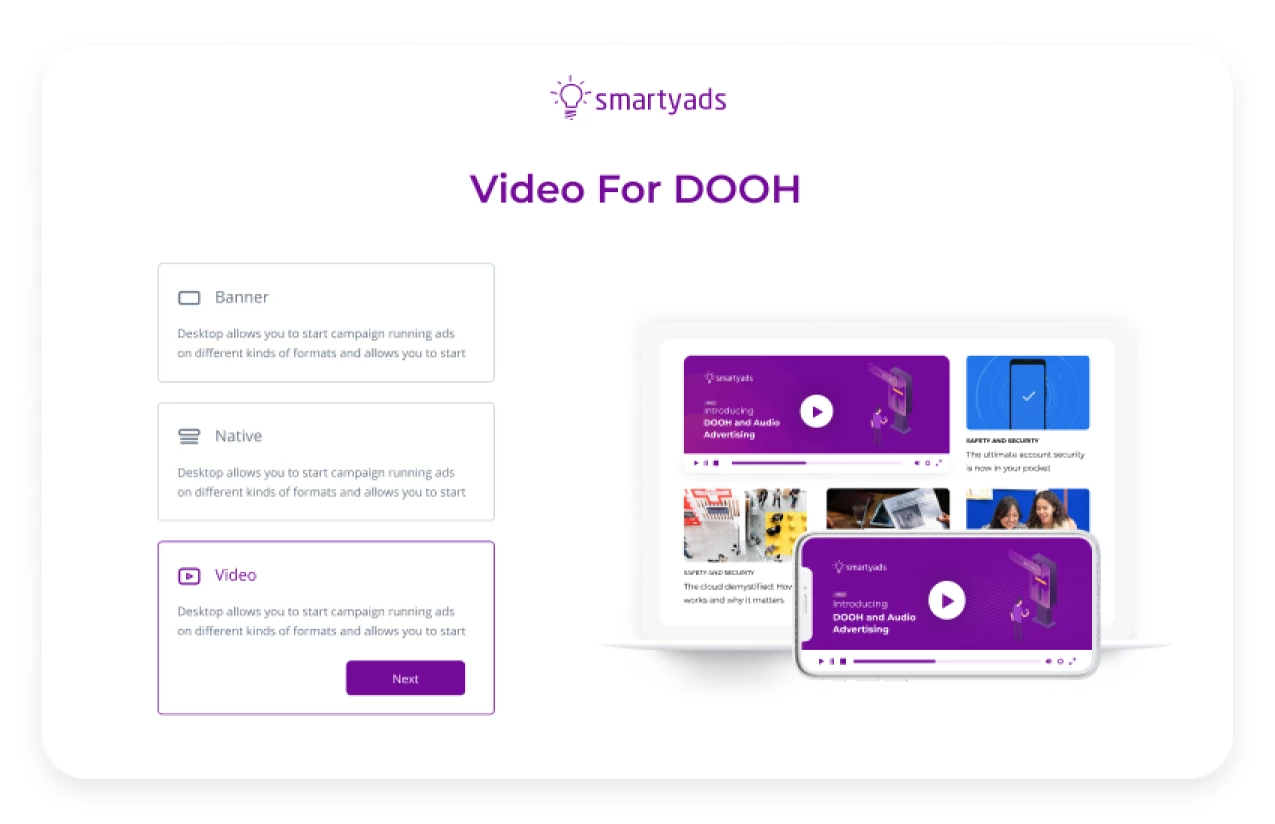
Diverse ad formats and customization: Go beyond banners. With formats like shoppable video, expandable rich media, and interactive CTV ads, programmatic provides a playground for creative experimentation. And with APIs, you can also automate additional aspects of your workflow.
Complex campaign objectives: Juggling acquisition, retargeting, and brand lift across channels? Programmatic stacks nicely with attribution models, CRM syncing, and sequential messaging strategies. Think of it as your marketing automation engine for paid media.
Campaign optimization (CPM optimization). Most of the programmatic platforms have ongoing AI-based optimization techniques today, which applies not only to CPM optimization but also optimization of all aspects of campaigns (including ad creatives).
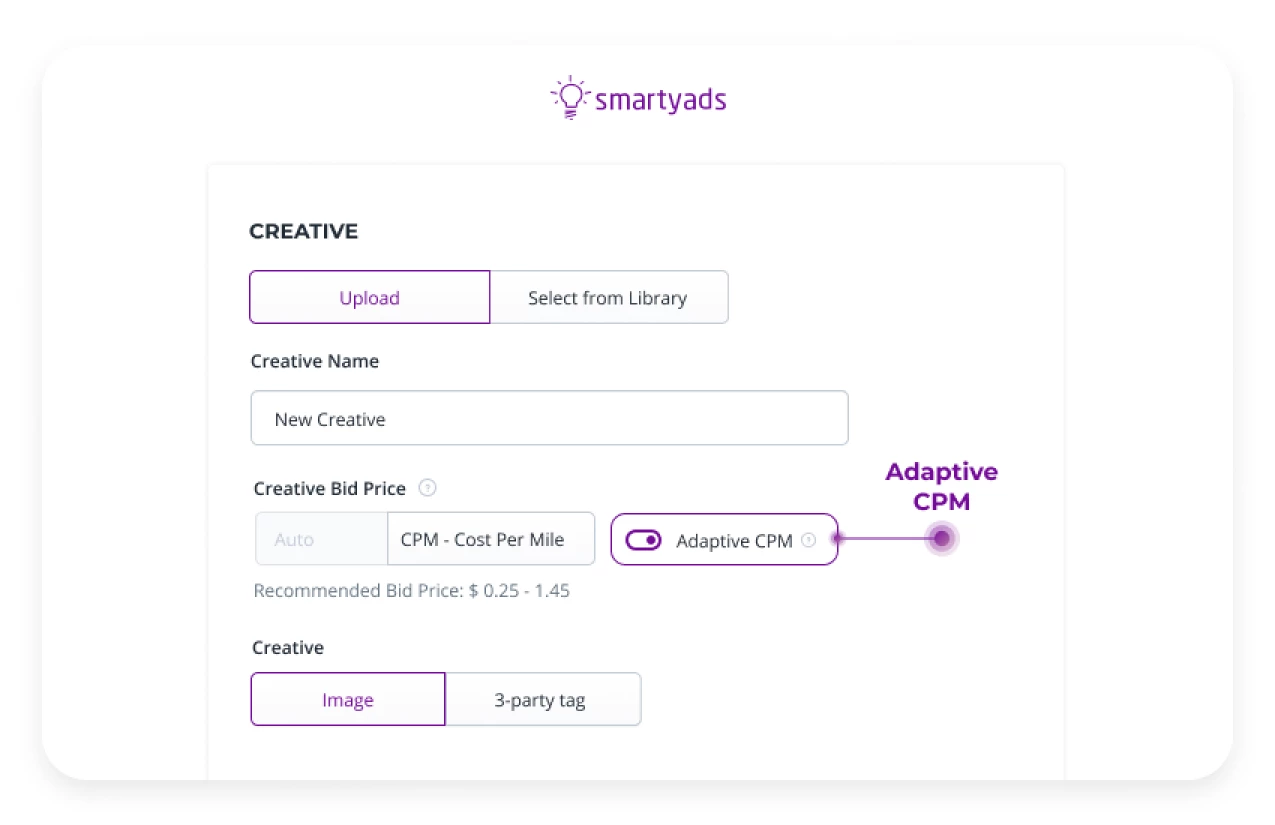
To sum up in very simple terms:
- If your goal is pure reach at a low cost, open exchange programmatic may still be your best bet.
- If your priority is engagement or advanced targeting, social platforms may justify the higher CPMs.
Best of both worlds: combine, don’t choose
Why choose between reach and relevance when you can have both? The smartest media plans in 2025 aren’t about picking sides—they’re about merging strengths.
- Use social to emotionally connect with users and generate brand excitement where they scroll, like, and share.
- Use programmatic to scale those touchpoints, retarget engaged users elsewhere, and maintain a cost-effective presence across the web.
- Monitor seasonal CPM shifts and dynamically reallocate the budget. If TikTok spikes in December, pivot to CTV via programmatic without losing momentum.
- Along with RTB deals, leverage guaranteed CPM buys and programmatic direct deals (like curated deals or private marketplaces) to gain predictability and prevent budget shocks.
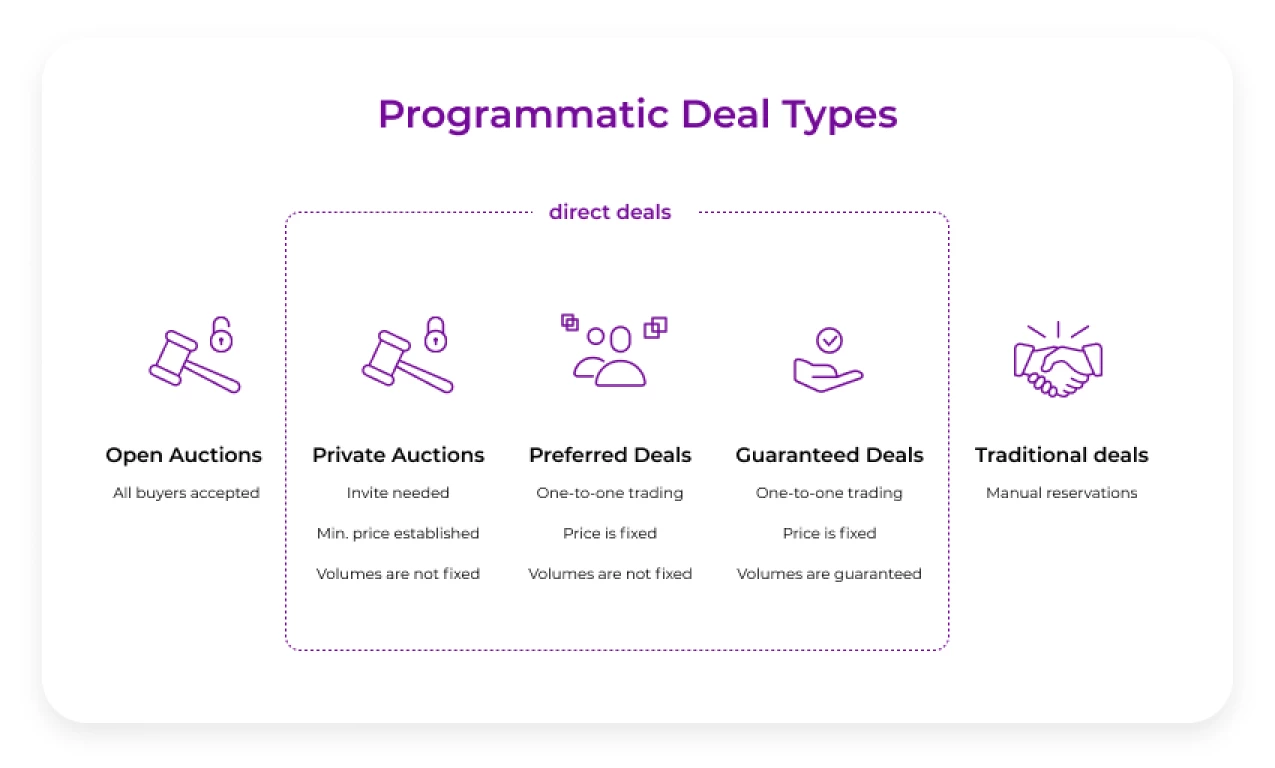
By integrating both, you create a feedback loop: social builds awareness and drives engagement; programmatic reinforces the message and closes the loop with precision and scale. It’s not a tradeoff. It’s a turbo boost.
Additionally, the social media cost breakdown below, will help you adjust your budgets according to the specifics of each social platform and the most expensive (and least expensive) advertising days:
| Platform | Most Expensive Day | Cheapest Day |
| Meta | Friday ($7.43) | Monday ($6.79) |
| TikTok | Thursday ($4.83) | Saturday ($3.63) |
| Snapchat | Thursday ($8.52) | Saturday ($7.55) |
| YouTube | Monday ($4.06) | Saturday ($2.97) |
Stack that with Q4’s 30–50% seasonal hikes, and you’ve got a strong case for agile, channel-aware planning.
Final take: costs are up, but so are your options
The days of cheap social media ads are fading. Meta, TikTok, and Snapchat are charging more—and rightly so, with more advanced tools and higher competition. But higher costs don’t mean fewer options, as social media advertising has a lot of perks to offer to advertisers.
Along with social media advertising stands programmatic – the tool that lets brands outsmart, not outspend, the competition. By combining social’s creative power with programmatic’s reach and efficiency, 2025 marketers can build stronger, smarter campaigns.
The goal isn’t to pay less—it’s to get more for every dollar. Take the best out of programmatic, advertise on SmartyAds DSP!

